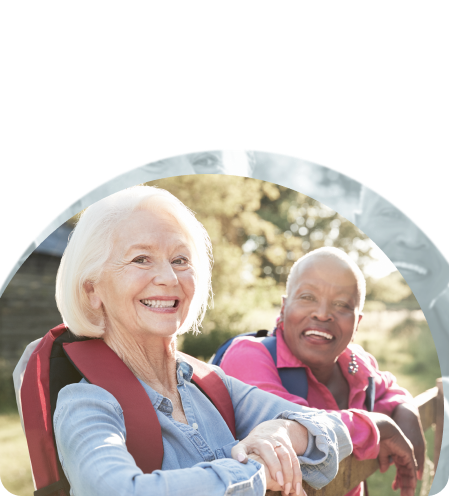
Young and old people can suffer from a traumatic brain injury (TBI) resulting from a severe blow to the head. The causes are multiple (fall, traffic accident, sports collision, etc.) and the consequences can vary from one individual to another depending on the severity of the injury. CBT is classified into three levels, mild, moderate and severe, according to the signs and symptoms observed (the presence of lesions on the medical imaging, loss of consciousness, altered mental status and post-amnesia. traumatic). A mild TBI is also called a concussion. Mild TBI is by far the most common with a proportion of 85% of all TBIs. However, it is not trivial, and can lead to serious consequences if not treated properly. Currently, there are several treatments that can help reduce the signs and symptoms of a TBI, and physical activity is one of them. We already know that the benefits of an active lifestyle are numerous. However, how can it contribute to the recovery and health of a person with TBI?
Currently, there are several treatments that can help reduce the signs and symptoms of a TBI, and physical activity is one of them. We already know that the benefits of an active lifestyle are numerous. However, how can it contribute to the recovery and health of a person with TBI?
The effects of physical activity in people with TBI
According to the literature, physical activity could have positive effects in individuals with TBI, regardless of its severity [1]. Aerobic training would promote increased blood circulation, but also stimulation of the brainstem (in the brain) which has the function, among other things, of controlling the level of consciousness. Thus, it would optimize alertness and problem-solving skills. This type of training is also believed to have positive effects on language, long-term memory and spatial orientation skills. It could contribute to the formation of neurons and the growth of new blood vessels. Aerobic type training would normalize physiological dysfunctions in the brain and reduce the risk of dementia. Ultimately, it could promote neuroplasticity by forming new connections between neurons.
While the practice of aerobic-type physical activities should be part of the treatment of a TBI, it is important to integrate it gradually by following a protocol that respects the healing process. Although studies on the subject are still in full swing and approaches may differ, the literature tends to show that the fact of undertaking an adapted physical activity program focusing on submaximal aerobic exercise, after a mild TBI (concussions), promotes healing. [2] Typically, this program should begin within two weeks of the concussion after a fitness assessment. Such an evaluation allows, among other things, to establish the target heart rate, one that is below the threshold for exacerbation of symptoms and which will be used as a reference during training. The stationary bike is usually recommended as a form of exercise, but the treadmill can be used if the person’s condition is suitable. In all cases, it is really recommended to be followed by a kinesiologist for the physical activity component of the rehabilitation, but also by other health professionals for complete care.
Physical activity and fall prevention
Unfortunately, mild TBI is quite common in the elderly and the main mechanism of injury is fall. [3] – [4] In this sense, physical activity should not only be considered a treatment for TBI, but also a way to prevent it. According to health professionals associated with the American College of Sports Medicine, the risk of falls could be reduced by 32 to 40% in the elderly who participate in physical activity. [5] Similar results were also confirmed by a committee of physicians and researchers trained by the National Institute of Public Health of Quebec. [6] By having an active lifestyle, older people have the power to improve their motor skills and, therefore, to better respond to internal and external disturbances that could cause a fall.
5 tips to reduce the risk of falls at home
1. Stay active!
2. Eat well and take your medicine.
3. Make sure your home is well appointed:
- Avoid having rooms that are cluttered.
- Avoid bulky rugs.
- Install handrails on the stairs.
- Light up darker rooms.
4.Wear non-slip shoes.
5.Use technical aids when recommended by a healthcare professional.
Finally, whether it is to prevent a fall that could result in a TBI or to promote healing following such a trauma, physical activity turns out to be a treatment that is both preventive and curative. However, monitoring by a kinesiologist is always recommended so that the exercise parameters are adequate. This health professional, a specialist in physical activity, can guide you in the choice of exercises, their duration, their intensity and their frequency in order to optimize the results.
[1] Chin, Lisa M et al. “Improved cognitive performance following aerobic exercise training in people with traumatic brain injury.” Archives of physical medicine and rehabilitation vol. 96,4 (2015): 754-9. doi:10.1016/j.apmr.2014.11.009
[2] Leddy, J.J., et al., Exercise is Medicine for Concussion. Current sports medicine reports, 2018. 17(8): p. 262-270.
[3] Timler D, Dworzyński MJ, Szarpak Ł, et al. . Head trauma in elderly patients: mechanisms of injuries and CT findings. Adv Clin Exp Med 2015;24:1045–50. 10.17219/acem/27565
[4] Gagné, M. (2017). Principales causes d’hospitalisations attribuables à un traumatisme non intentionnel au Québec, hommes et femmes confondus. Fichier Med-Écho (2013-2014 à 2015-2016). Bureau d’information et d’études en santé des populations, Institut national de santé publique du Québec.
[5] Dipietro.L; Campbell, W.W.; Buchner,D.M; Erickson,K.I. ; Powell,K.E., Bloodgood,B.; Hughes, T.D.; Kelsey, R.; Piercy, K.L; Vaux-Bjerke,A.; Olson,R.D.; for the 2018 physical activity guidelines advisory committee, physical activity, injurious falls and physical function in aging, medicine and science in sport and exercise: in Sports & Exercise: June 2019 – Volume 51 – Issue 6 – p 1303-1313 doi: 10.1249/MSS
[6] Gagnon, C. et Lafrance. M (2011). Prévention des chutes auprès des personnes âgées vivant à domicile. Analyse des données scientifiques et recommandations préliminaires d’un guide de pratique clinique. Institut national de santé publique du Québec.https://www.inspq.qc.ca/pdf/publications/1241_PrevChutesPersAgeesAnalyseRecomm.pdf







Comments